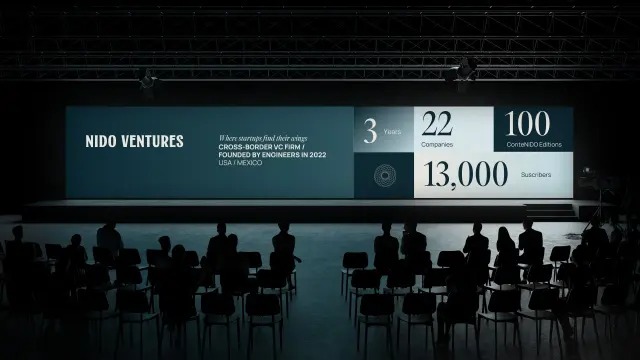Zero Trust: Cybersecurity Strategy in 2025
Zero Trust Architecture (ZTA) is transforming how organizations secure their digital environments by enforcing strict access controls and verification at every level.
Zero Trust Security
-
Zero Trust Architecture (ZTA) assumes no entity, internal or external, is trustworthy by default.
-
Every user, device, and application must prove legitimacy before gaining access.
-
ZTA emerged as a response to increasing insider threats and perimeter-less infrastructures.
-
Traditional firewalls and VPNs are ineffective against lateral movement of threats.
-
ZTA integrates identity, access management, and continuous authentication.
-
User identity verification includes multi-factor authentication (MFA), biometrics, and behavior analytics.
-
Device posture checks ensure only secure, compliant devices gain access.
-
Least privilege access policies reduce attack surfaces by limiting user rights.
-
Micro-segmentation divides networks into secure zones to contain breaches.
-
Monitoring tools continuously scan for suspicious activities in real time.
-
Security Information and Event Management (SIEM) tools integrate well with ZTA.
-
Zero Trust encourages a “verify first, access later” principle.
-
Cloud adoption fuels ZTA growth due to the need for flexible yet secure access.
-
Hybrid work models make traditional perimeter-based security obsolete.
-
Organizations must map data flows to understand where sensitive assets reside.
-
Contextual access decisions factor in device health, user behavior, and location.
-
Zero Trust is not a product, but a strategic framework across technologies.
-
ZTA supports compliance with GDPR, HIPAA, and other data protection laws.
-
Identity governance becomes central in ZTA implementation.
-
Continuous monitoring replaces periodic risk assessments.
-
Threat intelligence platforms enhance detection of advanced persistent threats.
-
Endpoint Detection and Response (EDR) is critical for ZTA endpoint visibility.
-
Artificial intelligence helps automate threat detection and access decisions.
-
Zero Trust aligns with Secure Access Service Edge (SASE) architectures.
-
Organizations should begin with protecting high-value assets first.
-
ZTA implementation is gradual, starting with identity and access management.
-
Security awareness training supports ZTA’s human-centric defenses.
-
Zero Trust adoption varies across industries, with finance and healthcare leading.
-
Misconfigurations are one of the main risks when deploying ZTA.
-
Vendor-neutral ZTA frameworks avoid lock-in and improve flexibility.
-
Government mandates, like the U.S. Executive Order on cybersecurity, drive adoption.
-
80% of cyberattacks leverage stolen or weak credentials—ZTA mitigates this.
-
Cyber insurance providers now favor companies with Zero Trust models.
-
ZTA increases visibility, control, and adaptability in threat landscapes.
-
Cost concerns exist but long-term ROI is strong due to breach prevention.
-
ZTA supports secure DevOps by enforcing identity-driven workflows.
-
Secure service-to-service communication is enabled by certificate-based auth.
-
Insider threats are minimized through just-in-time access controls.
-
Machine learning can flag anomalous behaviors dynamically.
-
Cloud-native security tools like CASBs work well with ZTA strategies.
-
Public sector adoption is rising due to digital government transformations.
-
Data loss prevention (DLP) tools complement Zero Trust by securing content.
-
Risk-based access adapts in real time, increasing agility and resilience.
-
Trust scoring systems evaluate the risk level of access requests.
-
The cultural shift to ZTA requires executive leadership and buy-in.
-
Network Access Control (NAC) tools enforce ZTA on local networks.
-
Security automation streamlines policy enforcement and reduces manual errors.
-
APIs are protected through token-based access and rate limiting.
-
Containerized workloads require Zero Trust approaches tailored to ephemeral systems.
-
IoT and OT networks benefit from Zero Trust by isolating risky endpoints.
-
Shadow IT discovery is crucial to maintain control in a ZTA ecosystem.
-
Threat modeling helps prioritize security investments around critical assets.
-
Digital forensics tools aid post-incident analysis in Zero Trust environments.
-
Secure software development lifecycles now incorporate Zero Trust reviews.
-
Zero Trust maturity models help assess organizational readiness.
-
Security orchestration platforms enable faster incident response.
-
Managed Detection and Response (MDR) services accelerate ZTA deployment.
-
Cyber risk quantification tools show business value of Zero Trust security.
-
Interoperability between vendors is key to successful ZTA ecosystems.
-
ZTA supports passwordless strategies for seamless, secure access.
-
Regulatory frameworks are increasingly referencing Zero Trust principles.
-
Cloud Security Posture Management (CSPM) tools enforce ZTA in cloud.
-
Software-defined perimeters (SDP) restrict access beyond network boundaries.
-
Asset discovery tools form the foundation for Zero Trust implementation.
-
Zero Trust security audits measure compliance, configuration, and efficacy.






























